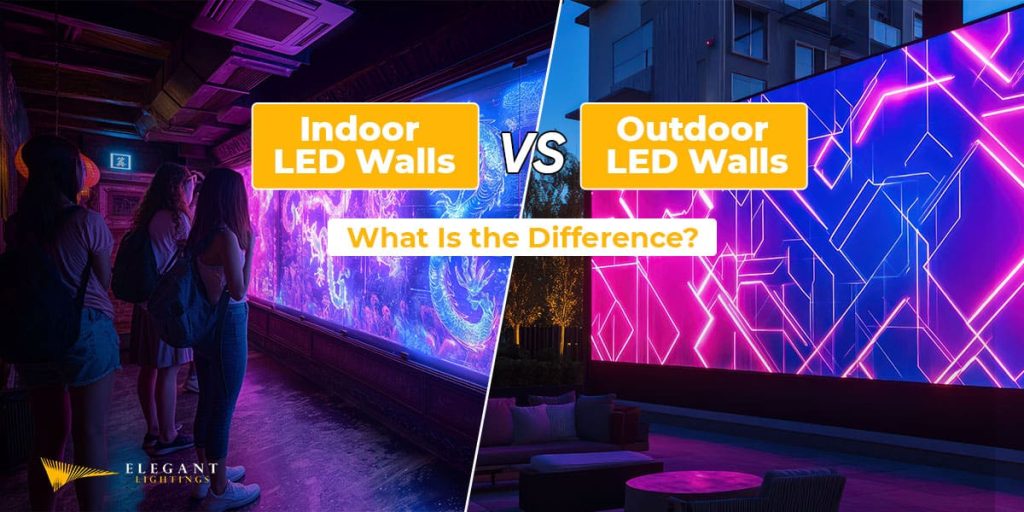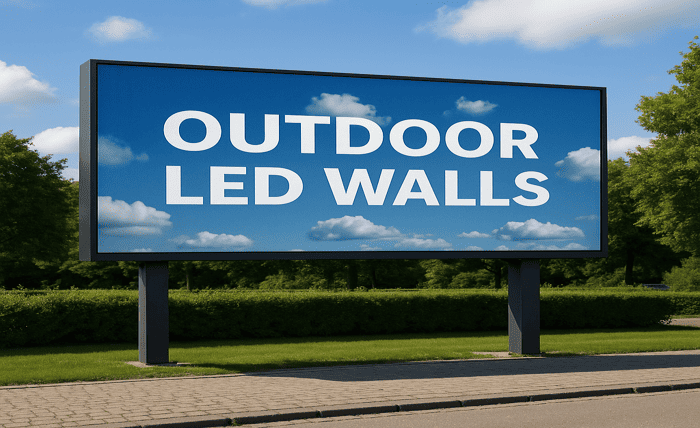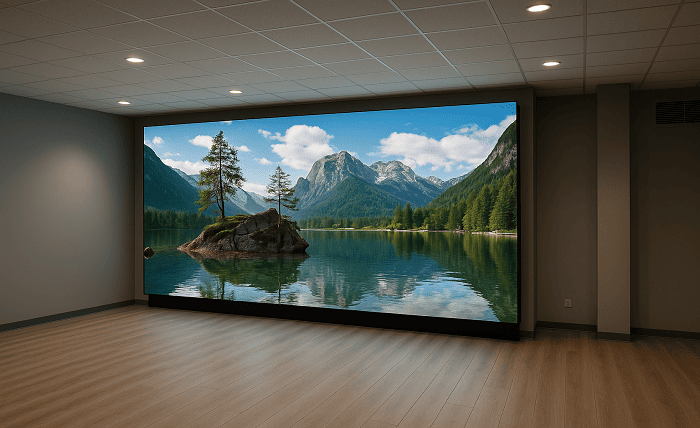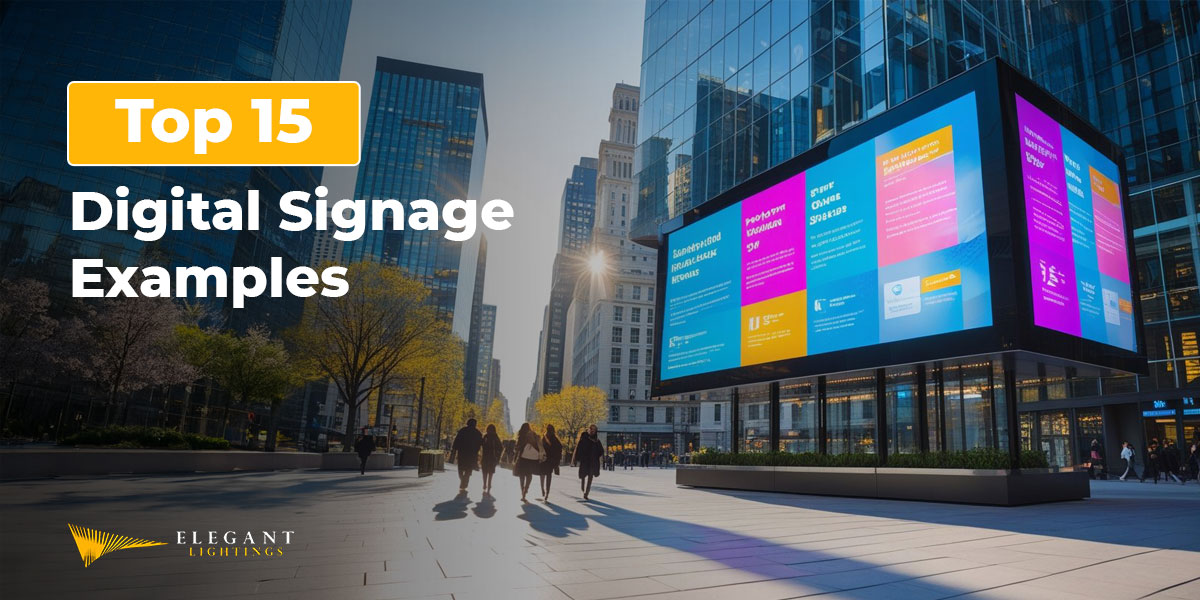
You must have seen those bright, eye-catching digital hoardings displaying fascinating video advertisements at Times Square.
What's on this page:
They are actually outdoor LED walls doing their job perfectly.
There was a time when static hoarding was normal. But things started to change!
- With the growth of technology, outdoor and indoor LED walls became mainstream.
- It was used in the shoot of The Mandalorian, which set a benchmark in Hollywood.
- Due to their captivating visuals, big production houses and even other industries switched from green screens to LED walls.
However, choosing between indoor and outdoor LED walls can be difficult, especially if you don’t know how they are different and can light up your operations!
In this blog, we will discuss all the differences between indoor and outdoor LED walls so that you can decide which is the best for you!
Indoor Vs. Outdoor LED Walls: Table Of Contents
- Quick Comparison Of Indoor And Outdoor LED Walls
- What Is An Indoor LED Wall?
- What Is An Outdoor LED Wall?
- What are the key differences between indoor and outdoor LED walls?
- Your Space. Your Audience. Our Technology!
- Indoor Vs. Outdoor LED Walls: FAQs
Quick Comparison Of Indoor And Outdoor LED Walls
Here’s a quick comparison between the two LED walls:
| Parameters | Outdoor LED Wall | Indoor LED Wall |
| Brightness | Normally crosses 5000 nits | 800 to 2,500 Nits |
| Pixel Pitch | 3mm to 16mm | Around 3mm |
| Resolution | 8K Resolution | 8K Resolution |
| Size and Weight | Big size and weighs more | Slim and lightweight. |
| Durability | No certified weatherproofing | Comes with IP 65 Rating |
| Applications | Concerts, Sports Arenas, Political Rallies, Public Advertising, Outdoor Festivals | Conference Halls, Retail Stores, Event Venues, Universities, Movie Shooting, Broadcast Studios |
What Is An Indoor LED Wall?
Indoor LED walls are digital displays that are strictly for indoor use. Their technical settings are adjusted for close viewing.
These are some of the core properties of indoor LED walls:
- Pixel Pitch: It is a bit lower, around 3mm, and so the screens deliver sharper content from a close viewing range.
- Brightness: The brightness output is between 800 and 2,500 nits, just the appropriate need for viewing in indoor environments.
- Resolution: Can display content up to 8K resolution.
- Convenience: Indoor LED walls are generally slim and lightweight.
- Weatherproofing: They don’t get any certified weatherproofing, as they are used in closed environments and don’t have to face tough weather conditions.
- Applications: Displays like these are ideal for brand displays, presentations, or high-end events.
Best for: Conference halls, retail stores, event venues, universities, movie shooting and broadcast studios.
What Is An Outdoor LED Wall?

Outdoor LED walls are built for displaying content in external or open environments. Their main advantage over indoor units is that they are tougher and can withstand the effects of natural elements.
Let me walk you through its important properties and features:
- Brightness: With a brightness output of over 5000 nits, it ensures the content remains visible even under direct sunlight.
- Pixel Pitch: These screens have a pixel pitch tuning from 3mm to 16mm for viewing their content from a far distance.
- Weatherproofing: They generally get an IP65 rating, which makes these outdoor LED walls dust and water-resistant.
- Durability: They work even in dust storms, heat, or heavy rains.
- Heat Management: Equipped with in-built cooling systems to facilitate heat dissipation.
- Convenience: They’re bigger than indoor LED screens and heavier, too.
Best For: Concerts, sports at stadiums, political rallies, outdoor advertising and festivals.
What Are The Key Differences Between Indoor And Outdoor LED Walls?
Let me walk you through the differences between indoor and outdoor LED walls and help you select the one that suits your purpose the best:
1. Brightness And Resolution
Indoor LED wall:
- Operates between 800 and 2,500 nits of brightness.
- Their display content resolutions can go up to 8K
- Causes minimal strain in your eyes
- Appropriate for viewers close to the screen
Outdoor LED wall:
- Displays content with more brightness, and can go above 5000 nits
- It is great for operating under bright daylight.
- Can also deliver resolution up to 8K
- Makes the content readable in any highly lit environment
Visibility And Pixel Pitch
Indoor LED Wall:
- These LED walls are viewed by people close to the screen
- Its pixel pitches are set as low as 0.9mm
- Nearby, it can display clear and sharp content to the audience
- Can be used for product showcases, conferences, corporate presentations, and movie or ad shooting
Outdoor LED Wall:
- This display is optimized for long-distance viewing
- Generally have a larger pixel pitch, between 3mm and 16mm
- Its high brightness makes it visible in tough weather conditions
- They can be used for outdoor advertising and backdrop at events or movie shoots
Durability And Weather Resistance
Indoor LED Wall:
- It has a minimalistic design
- You won’t see this type of LED wall having any certified protection
- These walls don’t face harsh weather conditions outside
Outdoor LED Wall:
- These are just the opposite of what indoor LED walls do
- They are placed outside, exposed to UV rays, wind, rain and extreme temperatures
- Comes with IP 65 or IP 66 ratings to protect them from all these things
- The cabinet is fully sealed, and no foreign particles can enter the unit and mess around with any electronics
Power Consumption
Indoor LED walls:
- Their operating brightness is less than that of outdoor walls
- Thus, they consume less power and are energy-efficient
- They don’t have built-in fans, so there’s more electricity savings
Outdoor LED walls:
- Their brightness is even higher than indoor units
- There are built-in fans or ventilation systems inside
- Powering all these consumes more electricity
Installation And Structure

Indoor LED walls:
- These lightweight and thin LED screens can be easily installed anywhere
- They can be fixed on the wall, put on a stand, or suspended from the ceiling
- Indoor walls with curved screens are now available
- Perfectly fit in a room with round walls and provide an amazing experience to the audience
Outdoor LED walls:
- The outdoor units are comparatively heavy and have steel-reinforced frames
- You can install them at outdoor locations
- Due to their weight and large size, they would require strong mounting systems or concrete bases
- A strong foundational support is required to keep the entire structure stable
Your Space. Your Audience. Our Technology!
As we saw, Indoor and Outdoor LED walls are both designed for certain locations and environments because they are made and tuned for this kind of usage.
Thus, you must choose the right LED wall type to fit your project requirements.
At Elegant Lightings, we can help you choose the best LED lighting solutions!
We have years of experience delivering advanced LED screens to businesses from the industries we discussed.
With our LED products, you get end-to-end support starting from setup to maintenance.
You can even experience our LED solutions before buying, as we also provide live demonstrations.
But if you want to use it only for a short period, you can rent it from us, reducing your costs while also serving your purpose.
Call us today for a free consultation and get the best LED wall solution!
Indoor Vs. Outdoor LED Walls: FAQs
1. Are LED walls better indoors or outdoors?
Whether indoor or outdoor LED walls are better depends on these factors :
- Indoor LED walls are designed and tuned for indoor environments like conference rooms or retail stores, where viewers are closer to the screen.
- On the other hand, outdoor LED walls can be used in outdoor locations to handle extreme weather conditions. Plus, they are tuned for viewers who can see them from a far distance.
2. Is there a difference between indoor and outdoor LED lights?
Yes, indoor and outdoor LED lights do differ in certain aspects:
- Indoor LED lights are moderately bright and have a pixel pitch tune for close-range viewing. They generally don’t come with certified weather protection.
- Outdoor lights have a high brightness and a greater pixel pitch for viewing content from a far distance. They are also IP 65 rated, making them weatherproof.
3. What is an indoor LED display?
An indoor LED display is a digital screen that displays multimedia content through multiple LEDs. It is designed and tuned for indoor environments, which makes it ideal for corporate presentations, indoor ads, and private events.
4. What is an outdoor LED?
An outdoor LED display is a brighter LED display than an indoor one. It is engineered for use in outdoor locations where people can view it from a distance. Outdoor LEDs can handle rain, dust and UV rays and can be used at stadiums, concerts, or outdoor advertising.






